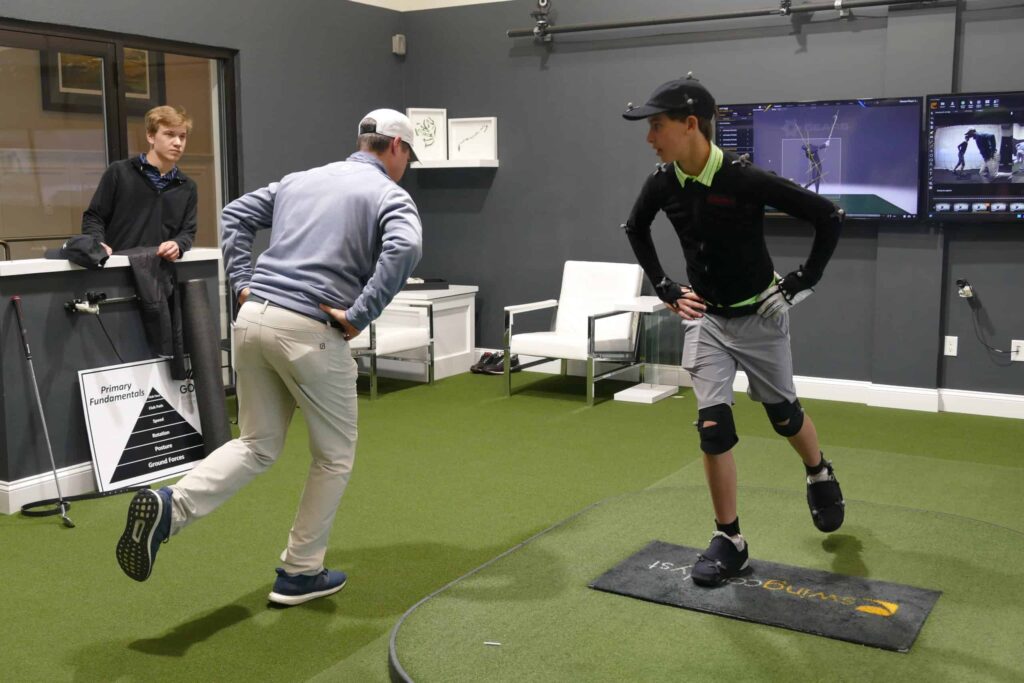We are getting towards the top of the pyramid of primary fundamentals. These lag factors are affected by the key fundamentals at the bottom of the pyramid. This week, we are going over club path and its importance, as well as what determines its direction.
Club path can be measured by a simulator such as Foresight, Trackman, or another technology that tracks the club head. Another way to determine club path is to infer it from ball flight. Either way, we know that club path will have a tremendous influence on the ability to control the golf ball. If the club swings in to out, the ball will tend to draw or hook, and vice versa. But what are the underlying causes of different swing paths? It has to be determined largely in part by the movement of the body as well as the equipment in the player’s hands.
This photo is a prime example of a player struggling with hooking the golf ball. It is determined that the club path tends to be too in to out. The player is in a reversed spine angle, a compromised position where the spine is leaning towards the target. In an effort to shallow the club out in the downswing and create power, the player early extends or stands up out of posture by leveraging the ground with vertical force. This will often lead a player to swing the club in to out as the body rotation does not swing the club around the body early enough.
There are many other examples of swing tendencies that lead to issues with club path. Find out where your club path is through impact, seek to understand the underlying causes, and then create a plan to allow change in the way you desire.


